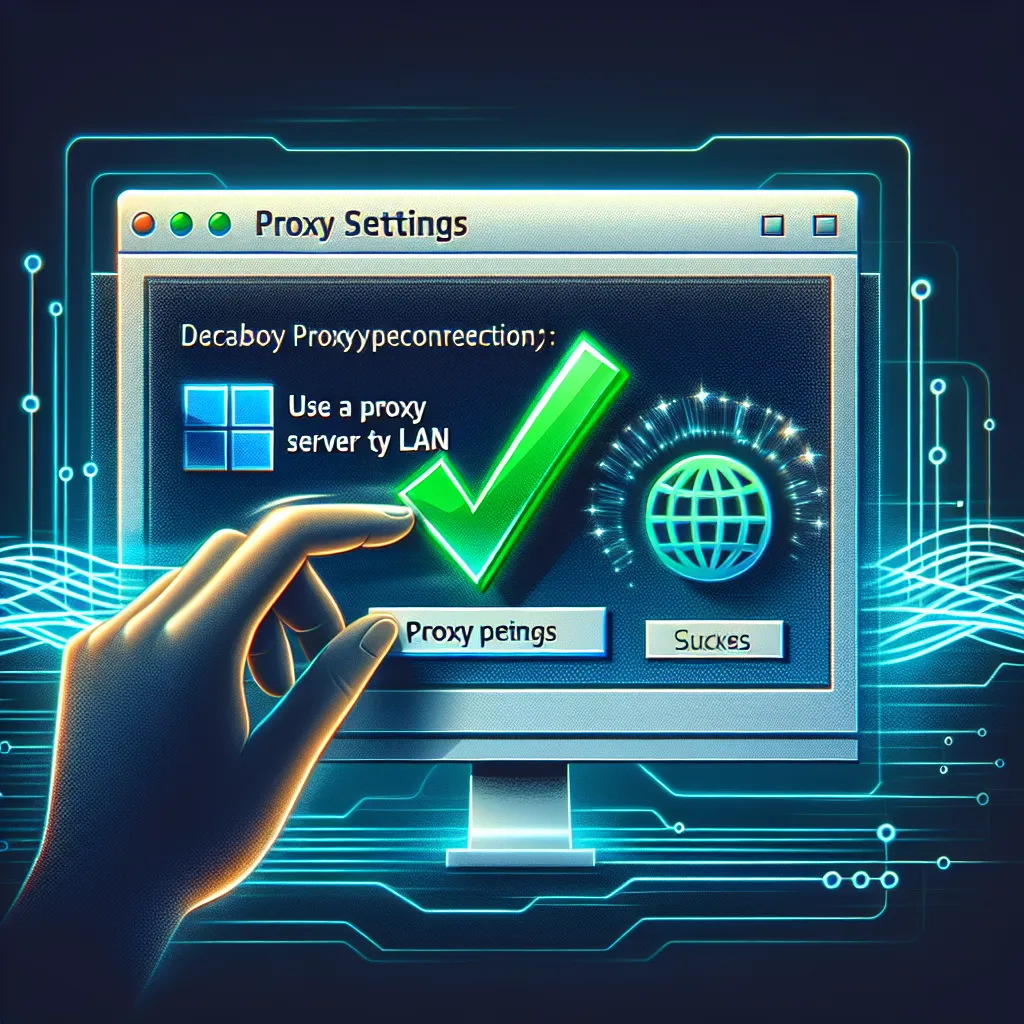In today’s internet-driven world, understanding how to manage proxy settings can feel like unraveling a mystery. When your connection is slow or certain apps refuse to cooperate, a lurking proxy might be the culprit. But fear not, because turning off a proxy service is simpler than it seems. Let’s dive into the process with ease, ensuring your internet experience is as smooth as a well-brewed cup of coffee.

What is a Proxy Service?
A proxy service acts like a middleman between your computer and the internet. It can help you access blocked content or enhance privacy, but it can also cause network glitches. If you’re facing connectivity issues or slow speeds, disabling the proxy might just be the magic wand you need.
Steps to Disable Proxy on Windows
Using System Settings
- Open Settings: Click on the Start menu and select Settings.
- Network & Internet: Navigate to Network & Internet > Proxy.
- Disable Proxy: Under Manual Proxy Setup, toggle the “Use a proxy server” option to OFF.
Control Panel Method
- Access Control Panel: Search for Control Panel in the Start menu.
- Internet Options: Go to Network and Internet > Internet Options.
- LAN Settings: On the Connections tab, click LAN settings and uncheck “Use a proxy server for your LAN”.
Using Command Prompt
- Open Command Prompt: Type
cmdin the search bar, right-click, and select Run as administrator. - Reset Proxy: Enter the command
netsh winhttp reset proxyand hit Enter.
Tips for Linux Users
On Linux, proxy settings might be scattered across different files. Here’s a quick way to disable them:
- Terminal Command: Open the terminal and type:
bash unset http_proxy unset https_proxy - Check Configuration Files: Ensure no proxy settings linger in configuration files such as
/etc/environmentor~/.bashrc.
Common Challenges and Solutions
- Persistent Proxy Settings: Sometimes, proxy settings reappear. This could be due to malware or system policies. Use a trusted malware scanner to ensure your system is clean.
- Multiple Devices: Ensure all devices connected to your network are configured correctly. Forest VPN offers seamless protection across multiple platforms, ensuring each device is secure.
Why Forest VPN is Your Best Bet
When it comes to ensuring a hassle-free internet experience, Forest VPN stands out with its user-friendly interface and exceptional privacy features. Here’s why you should consider it:
- Data Privacy: Forest VPN ensures no logs are kept, protecting your online activities from prying eyes.
- Environmentally Friendly: With its battery-saving technology, Forest VPN reduces your carbon footprint.
- Affordable Pricing: Enjoy premium services for the price of a coffee cup each month.
Testimonials
Sarah T., a tech enthusiast, shares: “Switching to Forest VPN was the best decision ever! My internet is faster, and I love that they don’t track my activities.”
Mike P., a frequent traveler, adds: “With Forest VPN, I can access my favorite shows anywhere. Plus, it’s super easy to use!”
Conclusion
Turning off proxy services may seem daunting, but with these steps, you’re well on your way to a smoother internet experience. Embrace the convenience and security of Forest VPN to ensure your connection is always reliable and safe. Remember, a little knowledge goes a long way in keeping your digital life running smoothly.
How to Turn Off Proxy Service
To turn off proxy service, follow these steps:
Using Windows Settings
- Open Settings: Click on the Start menu, then select Settings.
- Network & Internet: Navigate to Network & Internet > Proxy.
- Disable Proxy: Turn off the Use a proxy server option.
Using Control Panel
- Control Panel: Open Control Panel and go to Internet Options.
- LAN Settings: Click on the Connections tab, then select LAN settings and uncheck Use a proxy server.
For a seamless and secure browsing experience, consider using Forest VPN. It enhances your privacy while browsing and eliminates proxy issues. Get Forest VPN today!
FAQs about Disabling Proxy in Chrome and Using VPN
What is a proxy server and why would I need to disable it?
A proxy server is an intermediary that routes your internet traffic, often used to hide your location or access blocked content. Disabling it can help improve your internet speed and connectivity, especially if you’re facing issues with online services.
How do I disable proxy settings in Chrome on Windows?
To disable proxy settings in Chrome on Windows, click on the Chrome menu, go to Settings, then select System. Click on ‘Open your computer’s proxy settings’, toggle ‘Automatically detect settings’ and ‘Use a proxy server’ to OFF, and click Save.
What should I do if my proxy settings keep reverting back to enabled?
If your proxy settings keep reverting, it may be due to malware or system policies. Run a trusted malware scan to check for infections and also consider resetting your Internet Explorer settings, as they can influence system-wide proxy configurations.
Can I use a VPN instead of a proxy server?
Yes, using a VPN like ExpressVPN is often preferred over a proxy. VPNs provide better privacy protections and encrypt your internet traffic, enhancing security while browsing or accessing online services.
What steps can I take if I cannot save my proxy settings?
If you cannot save your proxy settings, try accessing the settings through Control Panel or using Command Prompt to reset the proxy configuration. Additionally, check for any group policies or software that might be enforcing these settings.
